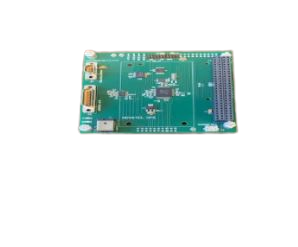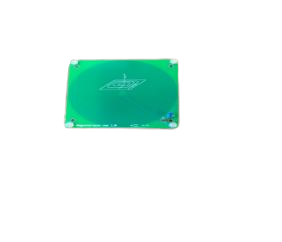D&F Systems Corporation Space Mission Cases
Unlocking the Secrets of the Cosmos
Small Satellite Hardware Development
• Electromagnetic Torquers
◦ Lead the design of a series of print circuit boards (PCB) to perform small satellite attitude determination from a single board.
▪ The schedule and tasks were managed to develop and to test the hardware.
▪ Different environmental tests were planned to increase the TRL of the PCB boards.
◦ Write the algorithms to interface the IMU and GPS systems in the same board called the Modular Attitude Determination System (MADS) Board.
◦ Test the system performance of the magnetic torquers.
▪ The test is performed to understand the power consumption due to the control board commands.
◦ Use the torque information as part of the simulation developed for small satellites.
▪ The data is integrated into the simulations to understand the torque capability to keep the
satellite rate and orientation within the expected requ
◦ Write the embedded algorithms to interface IMU, magnetometers, sun sensors, and GPS systems into a single board producing the navigation algorithm.
▪ The algorithms were developed in MATLAB using a known software interface.
▪ The algorithm ere generated and integrated in the flight computer to demonstrate its use in a simulated environment.
▪ The code provides the capability of updating the software in a short period of time without the need of exchanging the interfaces.
◦ Provide a simplified re-configurable hardware.
▪ This microcontroller is capable of executing the attitude determination software for a spacecraft without compromising the computational capability of the flight computer.
▪ The MADS can be reconfigured depending on the interface requirements of the sensors used in the satellite.
Quad-Sitara (QUATARA) Computers for Cubesats
◦ Investigate the development of the multi-core computer systems for small satellites.
▪ The multi-core process allows for multi-sensor connection by using data package management between the different processors.
▪ The multi-computer allows for fault tolerant systems in case that one of the computers fails during flight.
◦ Develop a design for small quad-core computer to increment the computational capability to 1 GHz processing per core for small satellites.
▪ The initial flight computers for small satellites had a CPU capability of less than 128 MHz.
◦ Investigate the algorithms for controlling the data flow between cores.
▪ A plan is generated to provide the first generation multi-core computer for small satellites.
▪ The hardware/software inputs are necessary to understand the multi-core software interface.
◦ Provide GNC software to test the capability of each core using a voting sequence.
▪ The voting sequence is used to determine which processor is working as expected.
▪ This voting sequence provide a method to determine which processor is faulty during its use.


Small Satellite Hardware Development
• Electromagentic Torquers
◦ Lead the design of a series of print circuit boards (PCB) to perform small satellite attitude determination from a single board.
▪ The schedule and tasks were managed to develop and to test the hardware.
▪ Different environmental tests were planned to increase the TRL of the PCB boards.
◦ Write the algorithms to interface the IMU and GPS systems in the same board called the Modular Attitude Determination System (MADS) Board.
◦ Test the system performance of the magnetic torquers.
▪ The test is performed to understand the power consumption due to the control board commands.
◦ Use the torque information as part of the simulation developed for small satellites.
▪ The data is integrated into the simulations to understand the torque capability to keep the
satellite rate and orientation within the expected requ
◦ Write the embedded algorithms to interface IMU, magnetometers, sun sensors, and GPS systems into a single board producing the navigation algorithm.
▪ The algorithms were developed in MATLAB using a known software interface.
▪ The algorithm ere generated and integrated in the flight computer to demonstrate its use in a simulated environment.
▪ The code provides the capability of updating the software in a short period of time without the need of exchanging the interfaces.
◦ Provide a simplified re-configurable hardware.
▪ This microcontroller is capable of executing the attitude determination software for a spacecraft without compromising the computational capability of the flight computer.
▪ The MADS can be reconfigured depending on the interface requirements of the sensors used in the satellite.
Quad-Sitara (QUATARA) Computers for Cubesats
◦ Investigate the development of the multi-core computer systems for small satellites.
▪ The multi-core process allows for multi-sensor connection by using data package management between the different processors.
▪ The multi-computer allows for fault tolerant systems in case that one of the computers fails during flight.
◦ Develop a design for small quad-core computer to increment the computational capability to 1 GHz processing per core for small satellites.
▪ The initial flight computers for small satellites had a CPU capability of less than 128 MHz.
◦ Investigate the algorithms for controlling the data flow between cores.
▪ A plan is generated to provide the first generation multi-core computer for small satellites.
▪ The hardware/software inputs are necessary to understand the multi-core software interface.
◦ Provide GNC software to test the capability of each core using a voting sequence.
▪ The voting sequence is used to determine which processor is working as expected.
▪ This voting sequence provide a method to determine which processor is faulty during its use.


Frequently Asked Questions
Q:
What types of engineering services does D&F Systems Corporation offer?
We offer a comprehensive range of engineering services, including aerospace engineering, software development, IT consulting, and more.
Q:
How much do D&F Systems Corporation's engineering services cost?
Our pricing varies depending on the project scope and requirements. Contact us to discuss your specific needs and receive a personalized quote.
Q:
Does the company provide custom engineering solutions?
Yes, we offer customized engineering solutions tailored to meet your specific needs.
Q:
How can I contact D&F Systems Corporation for customer support?
You can contact us through our website's contact form, email, phone, or by visiting our office during business hours.
Follow Us

Our expert team of engineers provides innovative solutions for the aerospace industry, from design to testing and manufacturing. Contact us today to learn more about our comprehensive range of engineering services.
Contact Us
D&F Systems Corporation
Madison, Alabama
- Monday - Friday, 8:00 am - 5:00 pm
Copyright ©2023 D&F Systems Corporation. All rights reserved.